Search Guide: UK Census Records
7-8 minute read
By The Findmypast Team | October 21, 2016
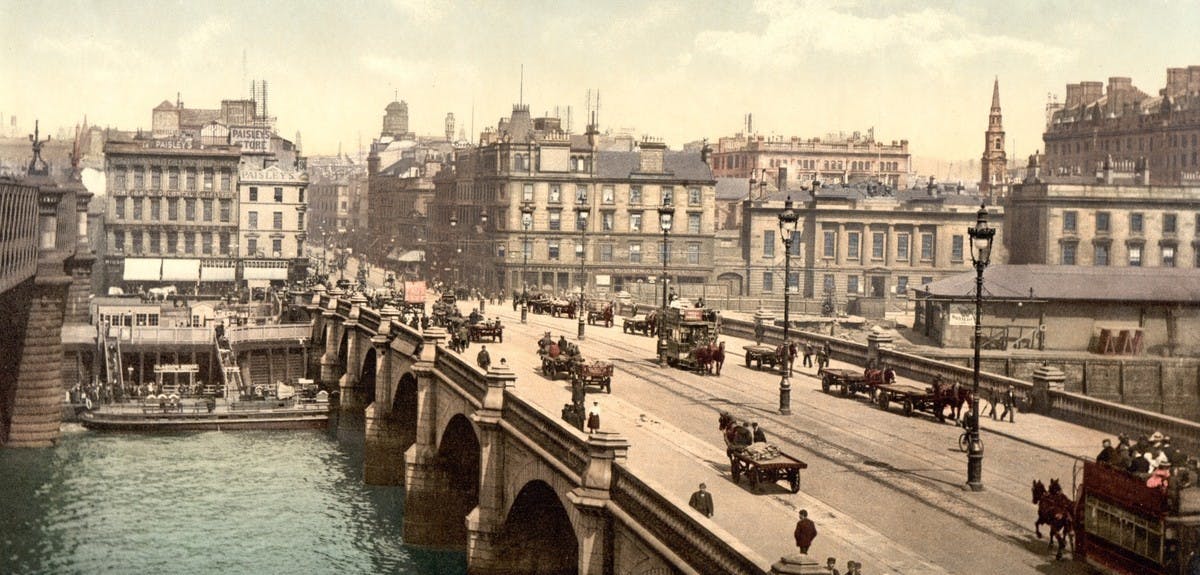
If you've traced your ancestor overseas to the UK and are wondering what to do next, remember what you did when researching your American ancestors and use similar strategies to make progress with your ancestors overseas. Don't let the new location intimidate you. The best place to begin your search for your UK ancestors is with the UK census records.

If you haven't begun searching through the UK census records, the UK census is very similar to our US census and is actually quite straightforward and can yield some really great insight and information into the life your ancestor.
One thing to note about the UK census records vs. the US census records is that the UK records are a little more consistent with the information they yield in comparison, so what you're likely to find in the 1891 UK census record, you're also likely to find in the 1861 census and so on.
Here are a few tips before you get started:
- If you have ancestors in Wales or Scotland, those records can be particularly difficult to find making those ancestors a bit more difficult to trace, but the UK census records do include some areas of Wales and Scotland, so be sure to start your search there.
- Just like the US census records, the UK records will vary a bit from year to year in terms of the information and data you can pull from each and for various years there are some gaps in information for a variety of reasons.
- The UK census records are taken every 10 years, and the difference between the US census and their census is that the UK census has been every 10 years since 1801, so keep that "01" in mind when doing your research in the UK, especially if you're used to the US census.
- Not all of the UK census records have images, so you will have to rely on transcriptions in some cases, so keep this in mind when conducting your search. As with US census records, some errors could have occurred when the enumerators took down information, but the errors aren't as prevalent in the UK census records as in some of the US records, but if your search isn't yielding any results, be sure to try variant spellings and make use of the wildcard function to help.
Below is a breakdown of each census and what you can find within each.
If your ancestors immigrated fairly recently, the 1911 census is a good place to begin your search for more information about their life overseas. The 1911 census is a goldmine for genealogists to learn more about the life your ancestor lived because not only does it cover those vital facts, birth dates, family relationships, etc., some of the records also include duration of marriage, number children from a specific marriage, and even illnesses or conditions your family members may have suffered from. This is a particularly great collection because this record set is complete with all pages available to view.
The 1911 census does have images, so be sure to look at the original images in addition to the transcriptions to glean more information from them. It is important to note that unlike the census records prior to 1911, Scotland is not included in this census.
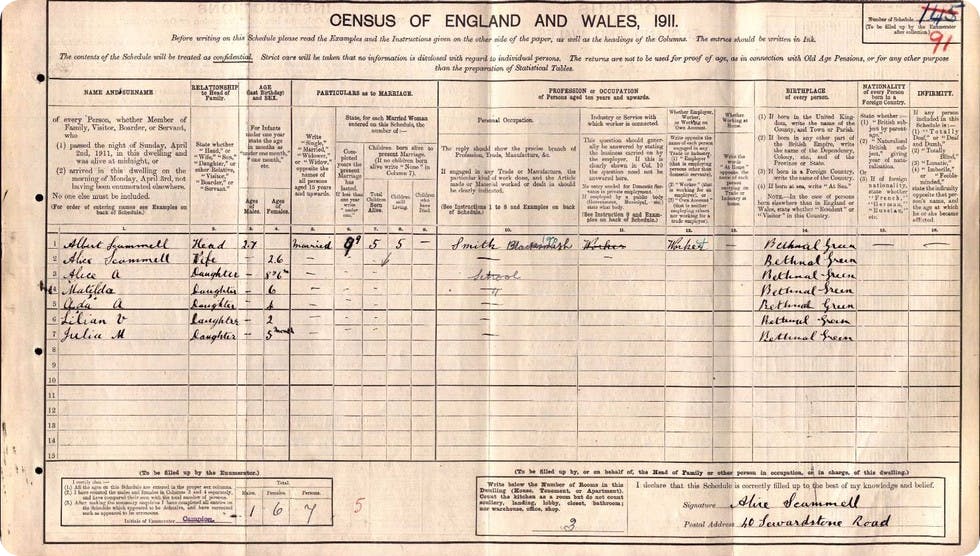
Original image from the 1911 Census for England and Wales
Having the specific details about the duration of marriages, for example, can be key clues to help you overcome brick walls because they are indicators of other records to search and will help you craft your timeline.
Here are some of the facts you can learn from the 1911 census:
- Where an individual lived
- Their age at the time of the census
- Who (what relatives) they were living with
- Their place of birth
- Occupation NOTE: if there's a code next to your ancestor's occupation, the guide to all the codes
- Details of any guests on the night of the census
- Details of any servants they had
Also, depending on an individual's circumstances, additional information could include:
- Whether they were an employee or employer
- Precise details of the industry or service they worked in
- Details of nationality
- Duration of their current marriage
- Number of children born to that marriage
- Number of children still living, and the number who had died
- Details of any illnesses or conditions each family member had, and the date these began
The 1901 UK census records will provide you with the key clues surrounding your ancestor's life from their birth place, age (with which you can calculate approximate birth year), and family relationships.
The 1901 census also includes information of people who were living in docked vessels, prisons, workhouses, hospitals, and barracks as well. If you uncover your ancestor in one of these records, it will point you to your next records to search, such as military records, newspapers for stories about their potential crimes, workhouse records, etc.
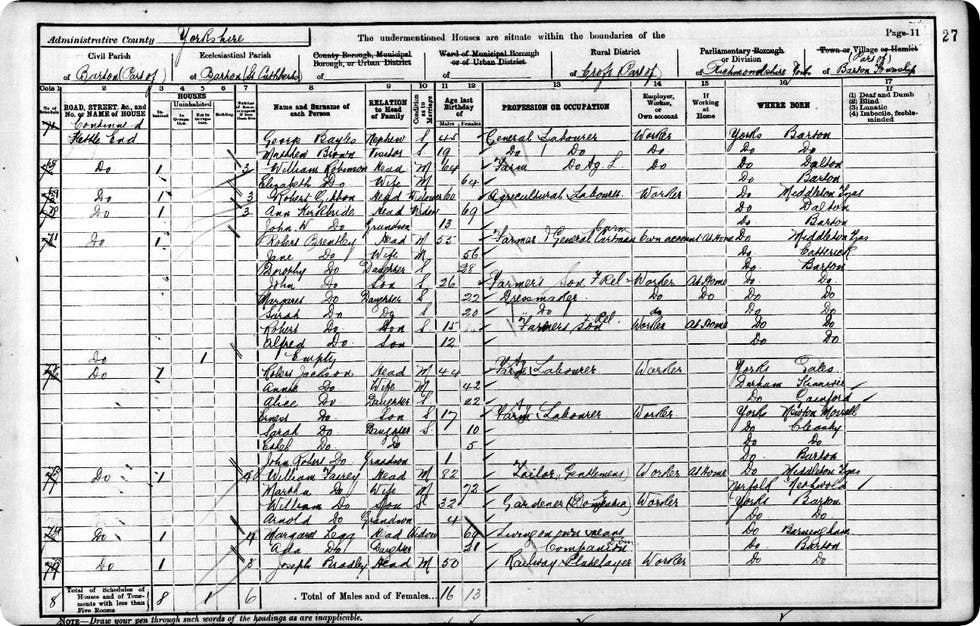
Original image from the 1901 census
Typically in this record you can find:
- First name
- Middle name
- Last name
- Sex
- Birth place
- Age
- Place of residence
- County
- Relationship to head of household
Note: The village of Deal in Kent is missing in its entirety and no known copies are available at this time.
The 1891 census is very similar to the 1901 census. There are a few missing pieces to this census record, so please see below for missing affected areas.

Original image from the 1891 England, Wales, and Scotland Census
The information within the 1891 records will vary, but you can usually find:
- First name
- Middle name
- Last name
- Sex
- Birth place
- Age
- Place of residence
- County
- Relationship to head of household
Note: The missing pieces of this census collection are the returns for Great White Lion Street, London. According to the enumerator's abstract page (RG 12/212, folio 168), there should be a total of 27 pages in the second book relating to enumeration district 4 of St Giles North sub-district. Pages 23-27, containing 140 persons, are missing and these would appear to have included Great White Lion Street.
The 1881 census is very similar to the 1891 and 1901 census. There are a few missing pieces to this census record, so please see below for missing affected areas.
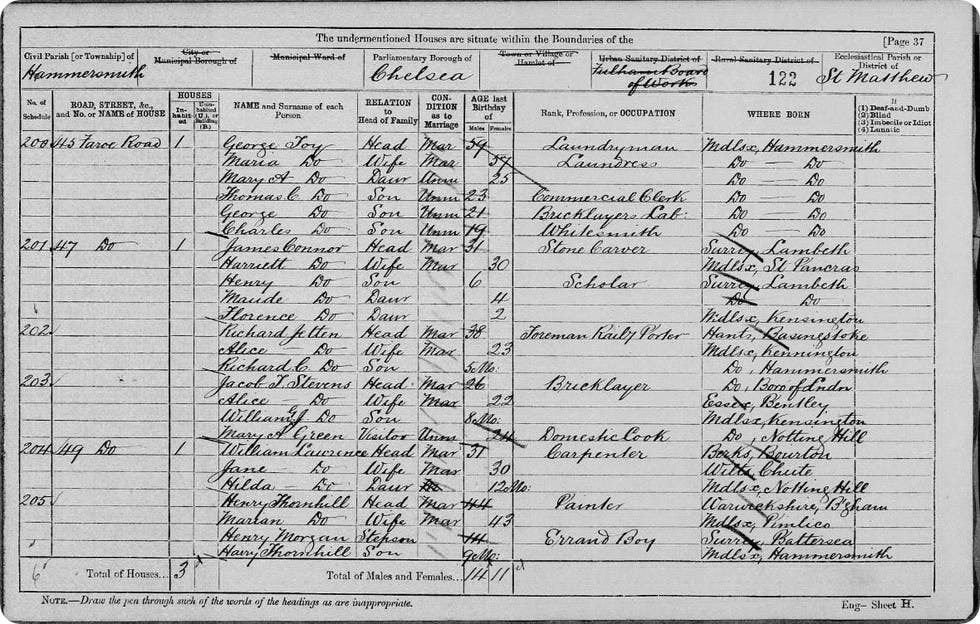
Original image of the 1881 England, Wales, and Scotland Census
The information within the 1881 records will vary, but you can usually find:
- First name
- Middle name
- Last name
- Sex
- Birth place
- Age
- Place of residence
- County
- Relationship to head of household
Note: Piece number 693 is missing from the 1881 census: house numbers 17-22 Cunard Street, Camberwell, London.
Part of house number 16 could be missing too if the house contained more children, a boarder or a visitor.
The 1871 census is very similar to the other census records mentioned previously. There are a few missing pieces to this census record, so please see below for missing affected areas.
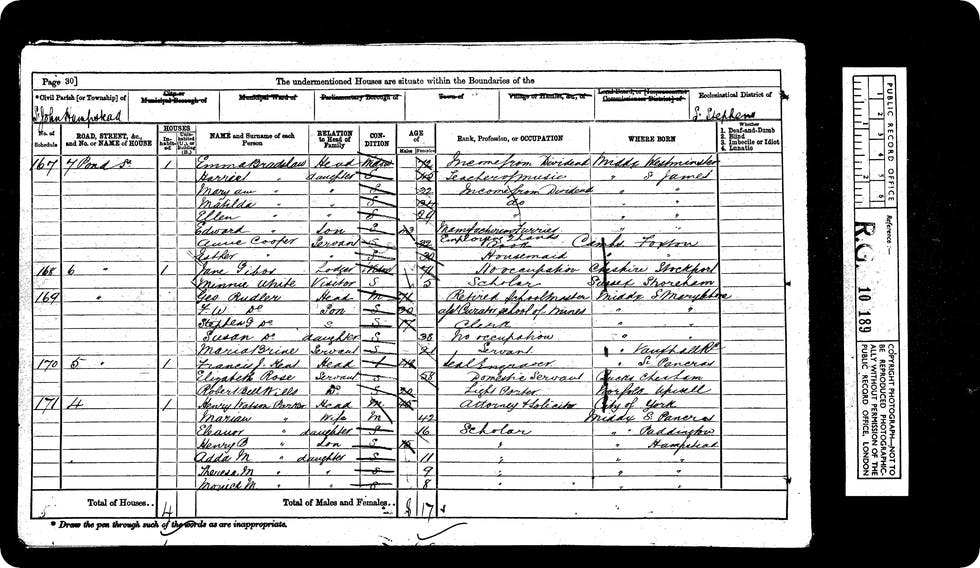
Original image 1871 England, Wales, and Scotland Census
The information within the 1871 records will vary, but you can usually find:
- First name
- Middle name
- Last name
- Sex
- Birth place
- Age
- Place of residence
- County
- Relationship to head of household
Note: The 1871 census does include a small number of permanent gaps. You can see a list of all the missing UK census records here. The missing records are:
Missing from Wales:

Missing pieces from the 1871 UK census from Wales

1871 UK census missing pieces from England
The 1861 census is very similar to the other census records mentioned previously. There are a few missing pieces to this census record, so please see below for missing affected areas.

Original image from the 1861 England, Wales, and Scotland Census
The information within the 1861 records will vary, but you can usually find:
- First Name
- Last name
- Sex
- Marital status
- Occupation
- Birth place
- Age
- Place of residence
- Relationship to head of household
One item to note from the 1851 census is that during this time period illiteracy was high, which meant that much of this information was provided to the enumerators verbally, and so be careful of errors in this record. When available, make sure to verify information on the original image and keep errors in mind for your search.
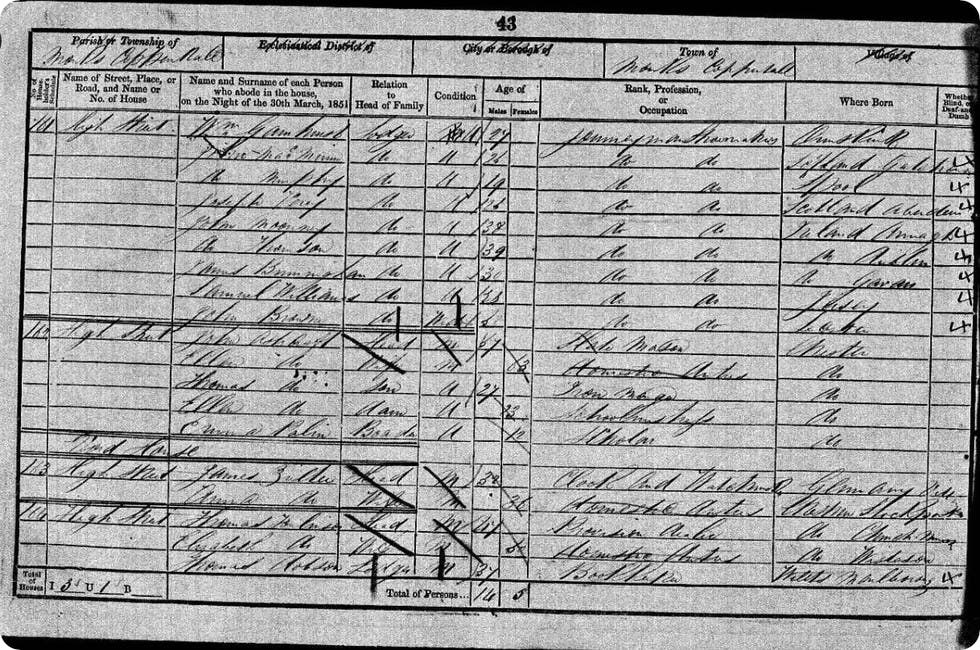
Original image from the 1851 England, Wales, and Scotland Census
In this record set you can find:
- First name
- Middle name
- Last name
- Sex
- Birth place
- Age
- Place of residence
- County
- Relationship to head of household
The 1841 census is unique in that it is the earliest census that has survived in its entirety. The 1841 census is also unique because it's the first time the head of household was given the form to fill in on behalf of everyone in the dwelling on a set day.
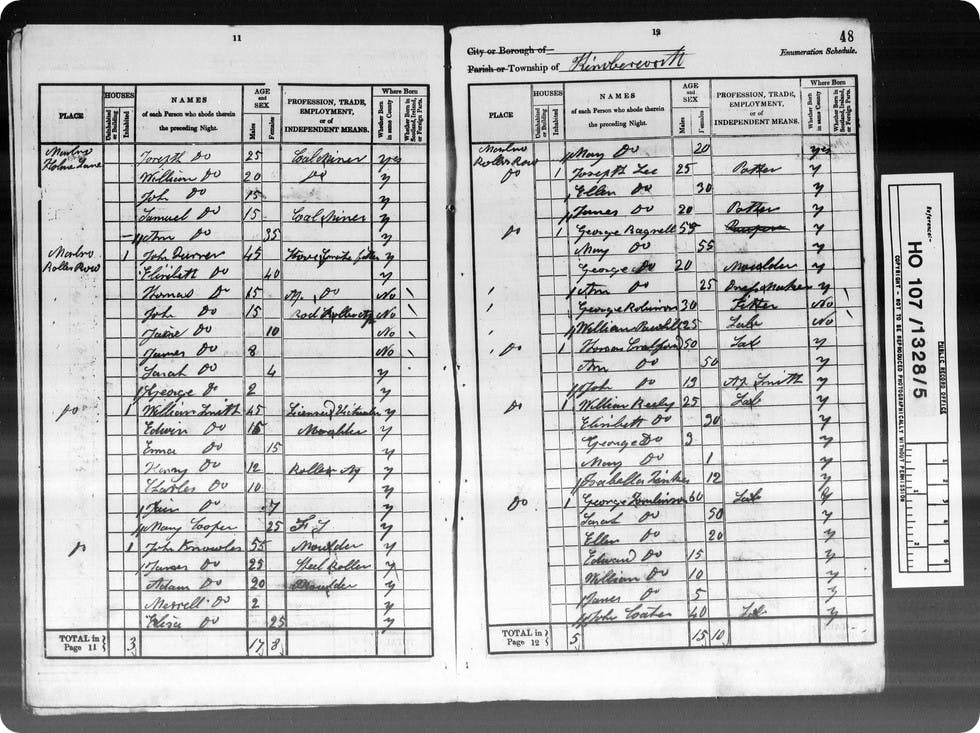
Original image from the 1841 England, Wales, and Scotland Census
In the 1841 census you can typically find:
- First name
- Middle name
- Last name
- Sex
- Birth place
- Age
- Place of residence
- County
Note: In the 1841 Census a policy of rounding down ages was in place. As such, people aged:
- 15-19 were recorded as 15
- 20-24 were recorded as 20
- 25-29 were recorded as 25
- 30-34 were recorded as 30
- 35-39 were recorded as 35...and so on
Ready to start searching for your English, Welsh, or Scottish ancestors? If yes, these records are for you!

Related articles recommended for you

Taylor Swift’s family tree shines with love, heartbreak and the triumph of the human spirit
Discoveries
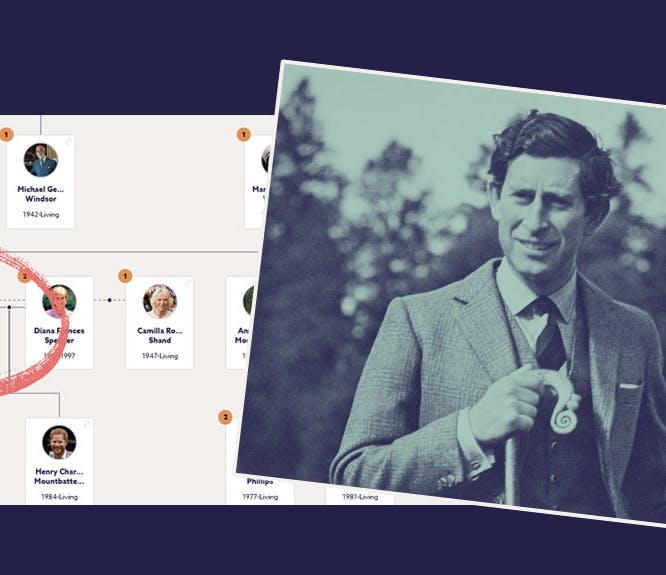
Who's who on King Charles III's family tree?
Build Your Family Tree
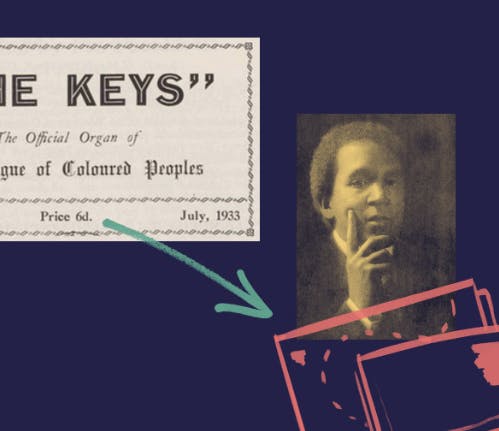
This October, connect with Black ancestry with our newspaper collection
Discoveries

